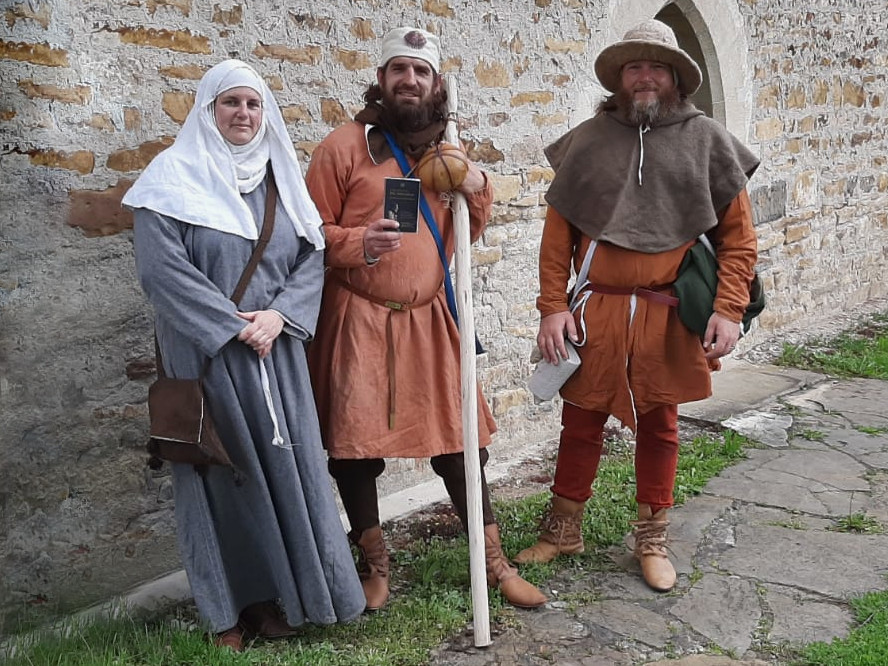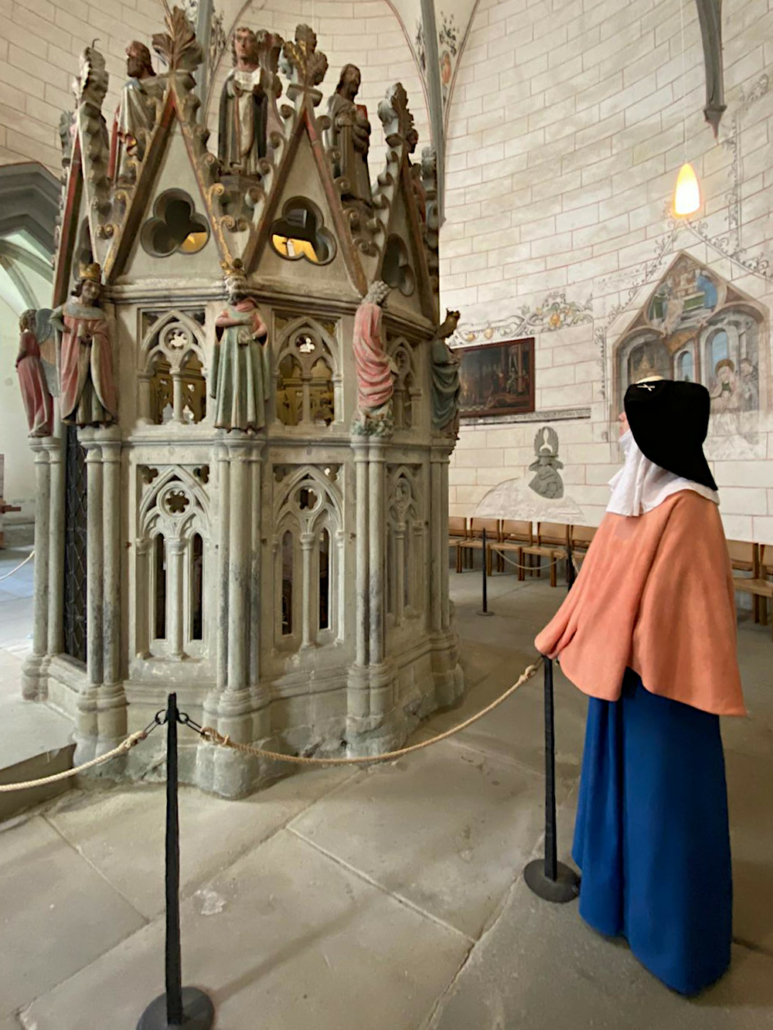Medieval Pilgrims
Why did medieval pilgrims leave home?
For the majority of medieval pilgrims, a pilgrimage is about breaking away from familiar surroundings and thus following Christ. People go to visit holy places in order to get closer to their religious role models at their places of work. Often they are people in need, with illnesses or desires, hoping for divine intervention. This comes clear by the circumstances that famines, epidemics, and natural disasters massively increased the number of pilgrims.

Some medieval pilgrims were sent on their way as punishment by secular or spiritual authorities. There are also people who took on the pilgrimage for others for a fee. These professionals offer to obtain something for the client through their prayers at the destination and during the journey.
Besides these reasons, many people knew how to combine a pilgrimage with business interests or a sense of adventure. Under the umbrella of pilgrimage, they could travel with more legitimacy and accommodation of the population.

Who were the first pilgrims?
Pilgrimage to holy places in Christianity begins as early as the 4th century. The first pilgrims went to Palestine to come closer to Christ at his places of activity. At first, these were mainly wealthy people from the Mediterranean region. In time, shipping connections via Venice became more commercialized, and the overland route via Hungary was also secured by King Stephen around the year 1000.
Thus, from the 11th century onwards, a pilgrimage to the Holy Land became more and more accessible even to the lower classes. In the 12th/13th century, the idea emerges that there are three main pilgrimage destinations: Jerusalem, Rome, and Santiago de Compostela.
Pilgrimage to Jerusalem
The holy city cannot be surpassed in importance for pilgrims. Increasingly, the idea of pilgrimage to Jerusalem is associated with warlike actions. There are several crusades. As a result, Jerusalem remains inaccessible to Christian pilgrims from 1291 until the middle of the fourteenth century.
Pilgrimage to Rome
Rome-pilgrims follow Christ indirectly by visiting the tomb of his successor Peter and thus also the “rock” on which Christ had founded his church. Rome was more accessible to medieval pilgrims and presents itself as a second Jerusalem with numerous monasteries and relics. Indulgences and graces are granted. In 1300, the pope even advertised a holy year in which all sins were forgiven by pilgrims. At peak times, 1000 pilgrims a day are said to pass through Basel with Rome as their destination.
Pilgrimage to Santiago de Compostella

Around the year 800, news spread that the tomb of the Apostle James had been discovered in the north of the Spanish peninsula. The cult around it is deliberately promoted by the local kings with church buildings and privileges. A community of monks responsible for the worship is formed. The place achieves supraregional fame already around 900. A hundred years later, masses of pilgrims from Europe were already flocking to the site. Churches in France also increasingly discover relics. The routing system is oriented towards Compostella. This can be seen in the course of the Via Regia trade route.
From about 1100, the scallop shell establishes itself as a symbol of pilgrims to the tomb of St. James the Apostle. These are already sold there as souvenirs in front of the cathedral. More than Rome or Jerusalem, Santiago de Compostella is perceived as a place where miracles are possible. Interest in the place remains high until the 16th century. From then on, the Spanish Inquisition and various political tensions quickly cause the flow of pilgrims to subside.
What could the pilgrims have eaten in the Middle Ages? Click here for the article about food and drinks (German).
